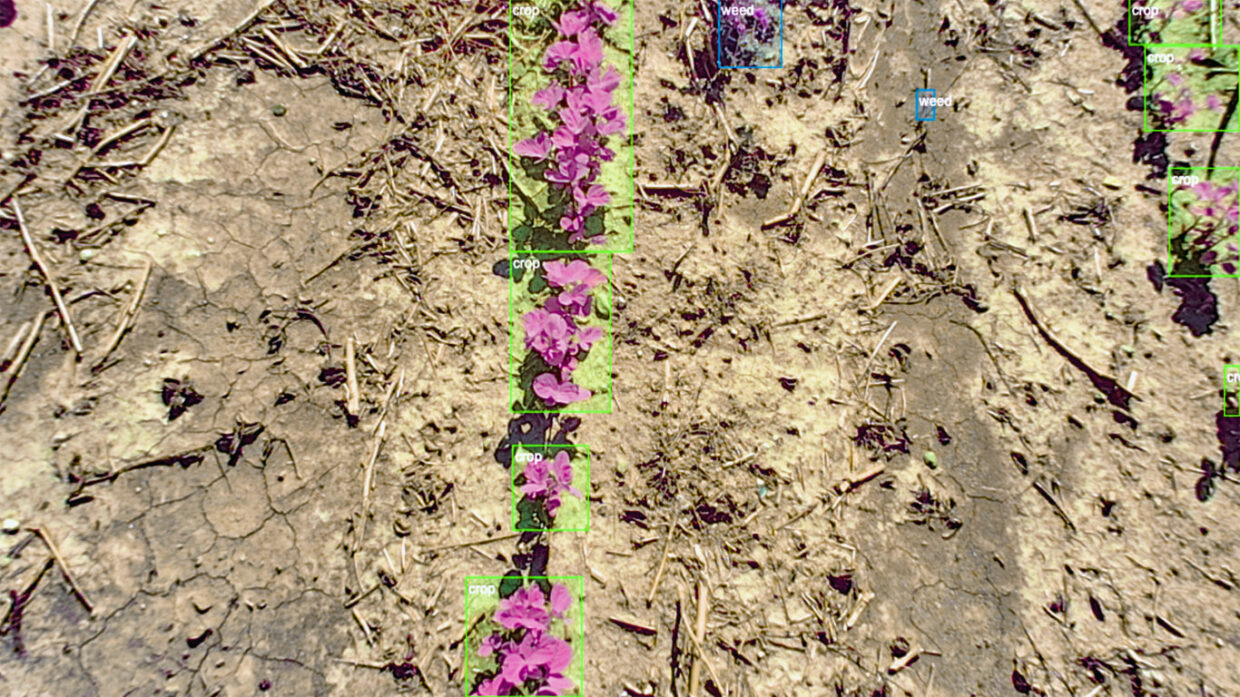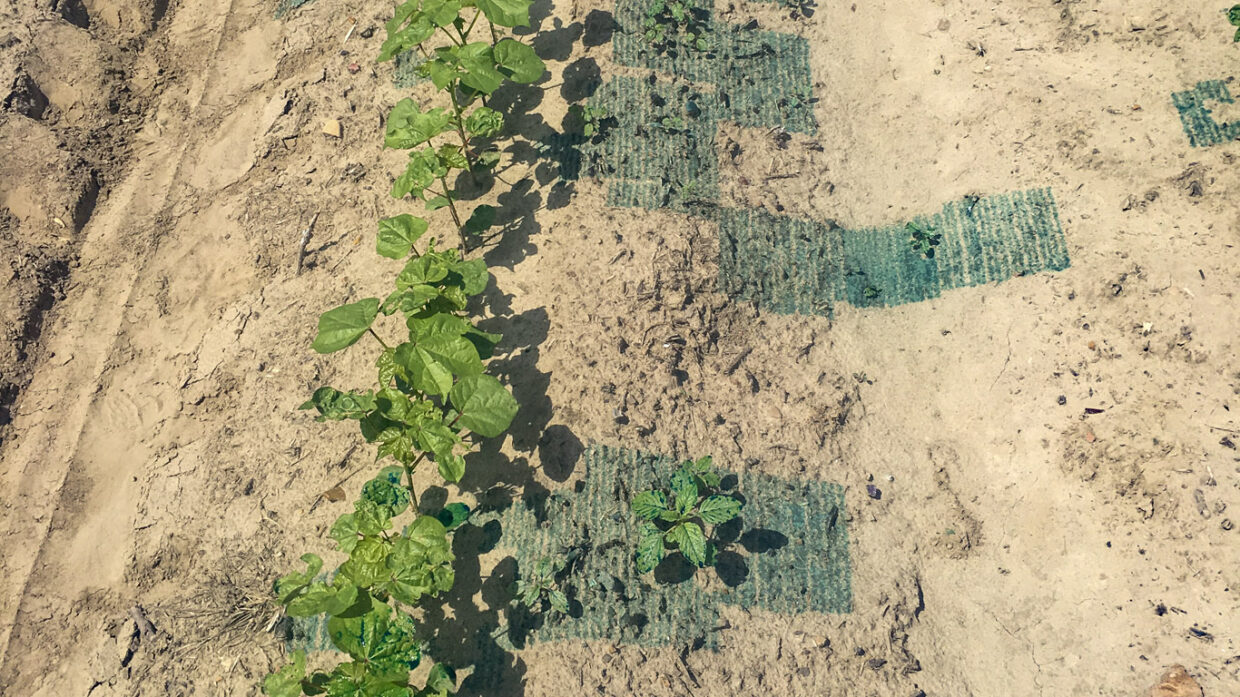Every farmer knows that weeds occur in patches but due to a lack of appropriate technology the entire field is currently treated through broadcast spraying. An efficient technological solution has to address three areas: Detect weeds, decide on the type and quantity of treatment and finally treat them.
This can lead to significant benefits for growers through increased yields, a significant reduction in input costs as well as benefits for the environment through lower chemical application and reduction in the likelihood of resistances developing. See & Act technologies are key to overcoming the problems described above and unlocking earning potential for growers within multiple production systems.
Detect weeds reliably
Although it’s relatively easy for technology to distinguish between green plants and brown soil, that doesn’t really help. This can be enhanced to identify weeds in between rows in traditional row crops (eg maize). However, weeds are particularly harmful within the row. To unlock the full value of this technology both weeds between and within the rows need to be detected and treated.
The greater the similarities, the more difficult it is to identify the weed.
But that is also the greatest challenge. Some weeds have the same morphological appearance as the crops themselves, making them difficult to identify. For example, in early growth stages it’s hard to separate grass weeds from a cereal crop. The greater the similarities, the more difficult the detection of weeds. It is even more demanding to develop a technical solution that meets the very complex requirements of camera, sensor and algorithm.
For this, John Deere has developed an industry first – computing power the same as IBM’s “Blue Gene” supercomputer, that revolutionised the IT space in 2008. In a rugged casing to meet the needs of agriculture it will be mounted on spray booms of the future. It will enable capturing an image, processing the data, taking a decision, and initiating execution within milliseconds to ensure productivity is maintained.

Is it crop or weed? The development of modern systems allows automatic plant classification in order to decide how to proceed with them.
Machine mounted or remote sensing
Complexity also determines whether you choose to use online or offlin e technology. The so-called real-time recognition or ‘online technology’ has the great advantage of seeing and treating within one pass. The short time window and thus high-speed operation plus the influences that affect the camera and sensor system – eg dusty field condition, dew, wind, and sun shading, makes execution of real-time sensing challenging.
In the offlin e approac h th e are a is scanned first, for example by a drone or maybe satellites in future. A challenge is the required resolution which demands low altitude flying for drones. The two-stage approach offers the potential to analyse the data with cloud-based services which doesn’t require high processing power on the machine. However, offline data analysis results in time delays which may lead to changes in the weed populations and densities in the meantime.
Decision making process
If weeds are detected the farmer needs to decide how to control them. In conventional production systems, the farmer decides on the herbicide used and the amount sprayed. However, the more detailed the analysis of the field, including the type of weed, the crop, the crop rotation, expected yield, the weather etc, the higher the potential savings can be. Handling this enormous amount of data is critical for success. Therefore, farmers will continue to play a key role in sustainable weed management. John Deere provides the full solution from farm data handling, scouting information, and machine integration to fully support the future line-up of weed management.
Future weed management equipment
Today, John Deere is the world’s leading sprayer manufacturer and already has technology developed to apply sprays to a very precise level. Technology like ExactApplyTM enables highly accurate application and is already leading in nozzle technology. With this current technology customers can reduce input costs by 5% while improving the quality of application. Soon, the See & Act technology supported by decision-making processes and highly precise and site-specific application will allow 50% to 90% input reduction.

The green spots show where chemicals have been sprayed in the field.
Research into efficient solutions
John Deere is working on various solutions to actively shape the future of plant protection. With the acquisition of Blue River Technology in 2017, the company has demonstrated its commitment to invest in precision equipment that will allow customers to unlock significant input savings in multiple production systems. Blue River continues its healthy development in the area of Artificial Intelligence (AI) – with this technology the machine will learn as it goes – additional cameras will verify that job execution was as intended and self-optimise to improve its performance continuously.
The journey started with plant detection on bare soil. Further developments will gradually increase the full potential of individual, location-based weed treatment.

